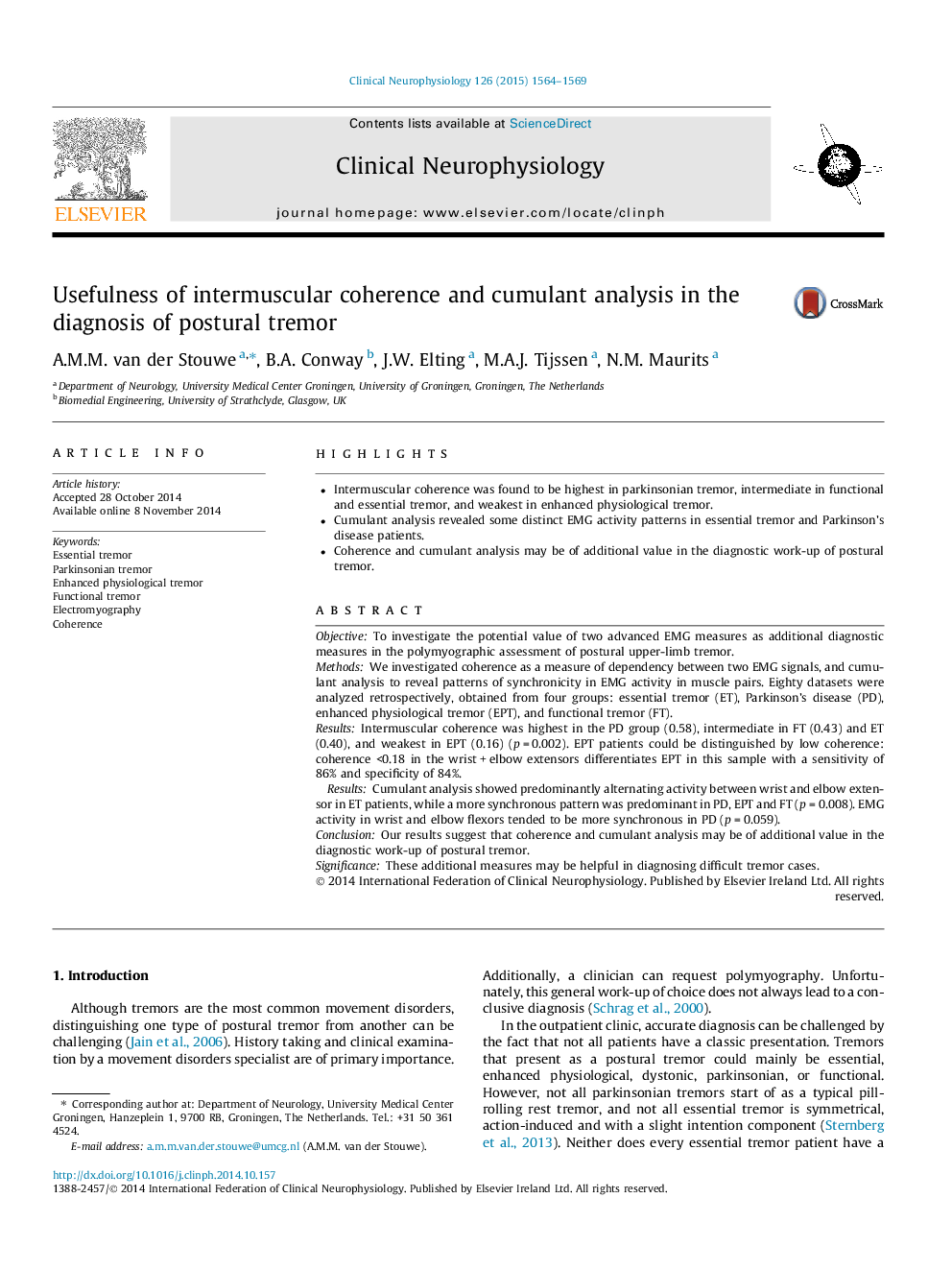| Article ID | Journal | Published Year | Pages | File Type |
|---|---|---|---|---|
| 3042557 | Clinical Neurophysiology | 2015 | 6 Pages |
•Intermuscular coherence was found to be highest in parkinsonian tremor, intermediate in functional and essential tremor, and weakest in enhanced physiological tremor.•Cumulant analysis revealed some distinct EMG activity patterns in essential tremor and Parkinson’s disease patients.•Coherence and cumulant analysis may be of additional value in the diagnostic work-up of postural tremor.
ObjectiveTo investigate the potential value of two advanced EMG measures as additional diagnostic measures in the polymyographic assessment of postural upper-limb tremor.MethodsWe investigated coherence as a measure of dependency between two EMG signals, and cumulant analysis to reveal patterns of synchronicity in EMG activity in muscle pairs. Eighty datasets were analyzed retrospectively, obtained from four groups: essential tremor (ET), Parkinson’s disease (PD), enhanced physiological tremor (EPT), and functional tremor (FT).ResultsIntermuscular coherence was highest in the PD group (0.58), intermediate in FT (0.43) and ET (0.40), and weakest in EPT (0.16) (p = 0.002). EPT patients could be distinguished by low coherence: coherence <0.18 in the wrist + elbow extensors differentiates EPT in this sample with a sensitivity of 86% and specificity of 84%.Cumulant analysis showed predominantly alternating activity between wrist and elbow extensor in ET patients, while a more synchronous pattern was predominant in PD, EPT and FT (p = 0.008). EMG activity in wrist and elbow flexors tended to be more synchronous in PD (p = 0.059).ConclusionOur results suggest that coherence and cumulant analysis may be of additional value in the diagnostic work-up of postural tremor.SignificanceThese additional measures may be helpful in diagnosing difficult tremor cases.
